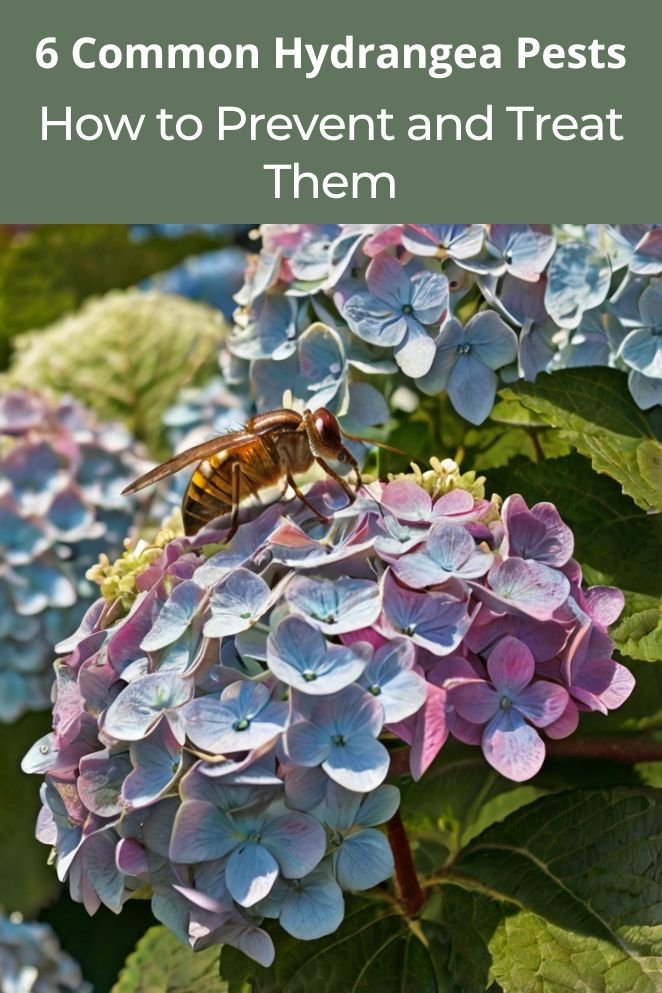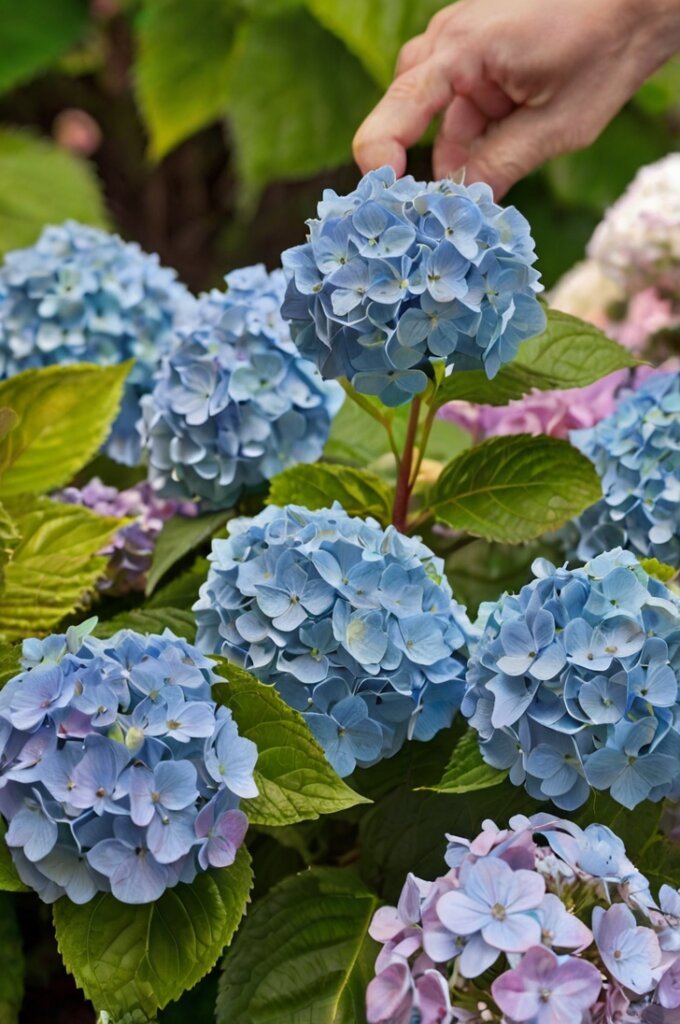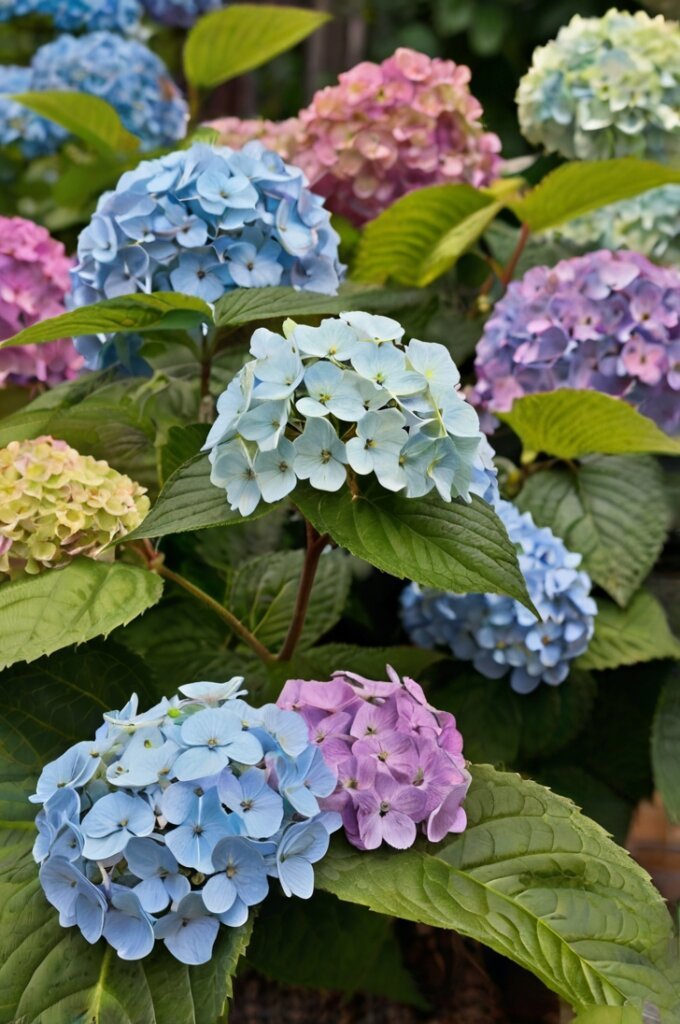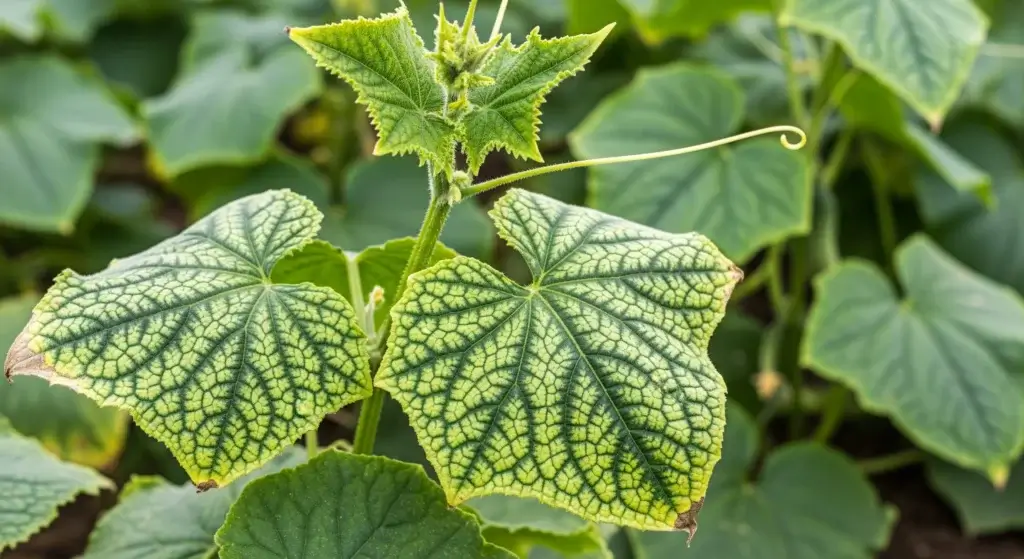
Hydrangeas are beloved for their stunning blooms, which can add a splash of color and elegance to any garden.
However, like all plants, hydrangeas can fall victim to various pests that threaten their health and beauty.
If you’re a gardener who cherishes these vibrant flowers, understanding the common pests that target hydrangeas is crucial.
By knowing what to look for and how to address these issues, you can ensure your hydrangeas remain lush and thriving.
Common Hydrangea Pests
Hydrangeas are generally hardy plants, but they can be susceptible to several pests.
These pests can cause significant damage if not managed promptly, leading to stunted growth, damaged foliage, and reduced blooming.
Aphids
Aphids are small, soft-bodied insects that can cause significant damage to hydrangeas by sucking the sap from the plant’s leaves and stems.
These pests are often green, but they can also be black, brown, or pink.
Aphids tend to congregate in large numbers on new growth, and their feeding can cause leaves to curl, yellow, and eventually drop off.
Additionally, aphids secrete a sticky substance called honeydew, which can attract sooty mold, further damaging the plant.
Spider mites
Spider mites are tiny, spider-like pests that are difficult to see with the naked eye.
They are usually found on the undersides of leaves and are known for causing a stippled or speckled appearance on the foliage.
Spider mites thrive in hot, dry conditions and can cause significant damage if left unchecked.
Infestations often lead to leaf drop and can weaken the plant over time.
Japanese beetles
Japanese beetles are one of the most notorious pests for gardeners, known for their voracious appetite.
These metallic green and bronze beetles can devour hydrangea leaves, leaving behind skeletonized foliage.
They are most active during the summer months and can quickly overwhelm a plant if not controlled.
Slugs and snails
Slugs and snails are nocturnal feeders that can cause extensive damage to hydrangeas, particularly to young plants and new growth.
These slimy pests leave behind telltale trails of slime and irregularly shaped holes in the leaves.
Mealybugs
Mealybugs are small, white, cotton-like pests that can infest hydrangeas, often congregating on the undersides of leaves or in leaf axils.
Like aphids, mealybugs feed on plant sap, weakening the plant and causing yellowing and leaf drop.
They also produce honeydew, which can lead to sooty mold growth.
Scale
Scale insects are another common pest on hydrangeas, appearing as small, oval, or round bumps on the stems and leaves.
These pests can be hard to spot because they often resemble plant tissue.
Scale insects feed on plant sap, which can lead to yellowing leaves, stunted growth, and reduced flowering.

Organic Pest Control Methods
For gardeners who prefer to avoid chemical treatments, there are several organic methods available to control hydrangea pests.
Insecticidal soap
Insecticidal soap is a natural, non-toxic solution that works well against pests like aphids, spider mites, and mealybugs.
It’s made from fatty acids that break down the protective outer layer of these pests, causing them to dehydrate and die.
Because it’s non-toxic, it won’t harm your plants, pets, or beneficial insects when used correctly, making it a great option for eco-friendly pest control.
Neem oil
Neem oil is a popular organic pesticide derived from the seeds of the neem tree.
It’s effective against a wide range of pests and works by interfering with their life cycles.
When insects come into contact with neem oil, it prevents them from feeding, molting, or laying eggs, which helps to control their populations.
Neem oil is also biodegradable, meaning it won’t linger in the environment after use.
Horticultural oil
Horticultural oil is another organic option that works by smothering pests like scale insects and spider mites.
It coats the pests, blocking their breathing pores and causing them to suffocate.
This method is especially useful during the dormant season, when many pests overwinter on plants.
By applying horticultural oil in the late winter or early spring, you can reduce pest populations before they become a problem during the growing season.
Diatomaceous earth
Diatomaceous earth is a natural powder made from the fossilized remains of tiny aquatic organisms called diatoms.
When sprinkled around your hydrangeas, it acts as a barrier against crawling pests like slugs and snails.
The sharp edges of the diatomaceous earth particles damage the exoskeletons of these pests, causing them to dehydrate and die.
It’s safe to use around plants, but it should be reapplied after rain or watering, as it can be washed away.
Beneficial insects
One of the most natural ways to control pests in your garden is by introducing beneficial insects that prey on common pests.
Ladybugs, lacewings, and predatory mites are examples of insects that feed on pests like aphids and spider mites.
By encouraging these helpful insects to make your garden their home, you can keep pest populations in check naturally.
You can attract beneficial insects by planting a variety of flowers and plants that provide nectar and shelter or by purchasing them from garden centers.

Prevention Strategies
Preventing pests from attacking your hydrangeas is often easier than dealing with an infestation.
Here are some strategies to keep your plants healthy and pest-free:
Proper spacing
When planting your hydrangeas, it’s important to give them enough space between each other.
This spacing helps with good air circulation, which is crucial in preventing moisture from building up.
When the air can move freely around your plants, it reduces the chances of problems like mold, mildew, and pests such as spider mites and slugs that thrive in damp conditions.
Regular inspection
Make it a habit to regularly check your hydrangeas for any signs of pests.
Look closely at the leaves, stems, and flowers for anything unusual, like holes, spots, or insects.
Catching a problem early means you can take action before it turns into a major infestation.
Regular inspections are a simple yet effective way to keep your plants healthy.
Healthy soil
The foundation of a healthy plant is healthy soil.
By adding compost or organic matter to your soil, you enrich it with nutrients that help your hydrangeas grow strong.
Strong, healthy plants are naturally more resistant to pests.
When your soil is rich and well-balanced, your hydrangeas will have the nutrients they need to thrive, making them less attractive to pests looking for an easy meal.
Watering practices
How you water your hydrangeas can also impact their susceptibility to pests.
It’s best to water them at the base of the plant, directly onto the soil, rather than from above.
When the foliage stays dry, it’s less likely to attract pests or develop mold and mildew, which can invite further problems.
Consistent, deep watering at the roots helps your plants stay hydrated without creating a damp environment that pests love.
Mulching
Applying mulch around your hydrangeas is another effective way to protect them.
Mulch helps the soil retain moisture and keeps the temperature steady, which is beneficial for plant health.
Additionally, mulch can act as a barrier that deters certain pests like slugs and snails from reaching your plants.
By mulching, you not only improve your hydrangeas’ growing conditions but also add an extra layer of protection against pests.
Pruning
Regular pruning is essential for keeping your hydrangeas healthy.
By removing dead or diseased branches, you eliminate potential hiding spots for pests.
Proper pruning also improves air circulation and allows more sunlight to reach the inner parts of the plant, which further reduces the chances of a pest infestation.
Keeping your hydrangeas well-pruned helps them stay strong and less vulnerable to attacks.

Final Thoughts
Hydrangeas are a beautiful addition to any garden, but they require vigilance to protect them from common pests.
By understanding the threats posed by aphids, spider mites, Japanese beetles, and other pests, you can take proactive steps to keep your hydrangeas healthy and vibrant.
Whether you choose organic pest control methods or preventive measures, the key is early detection and consistent care.
With the right approach, you can enjoy your hydrangeas’ stunning blooms all season long.



